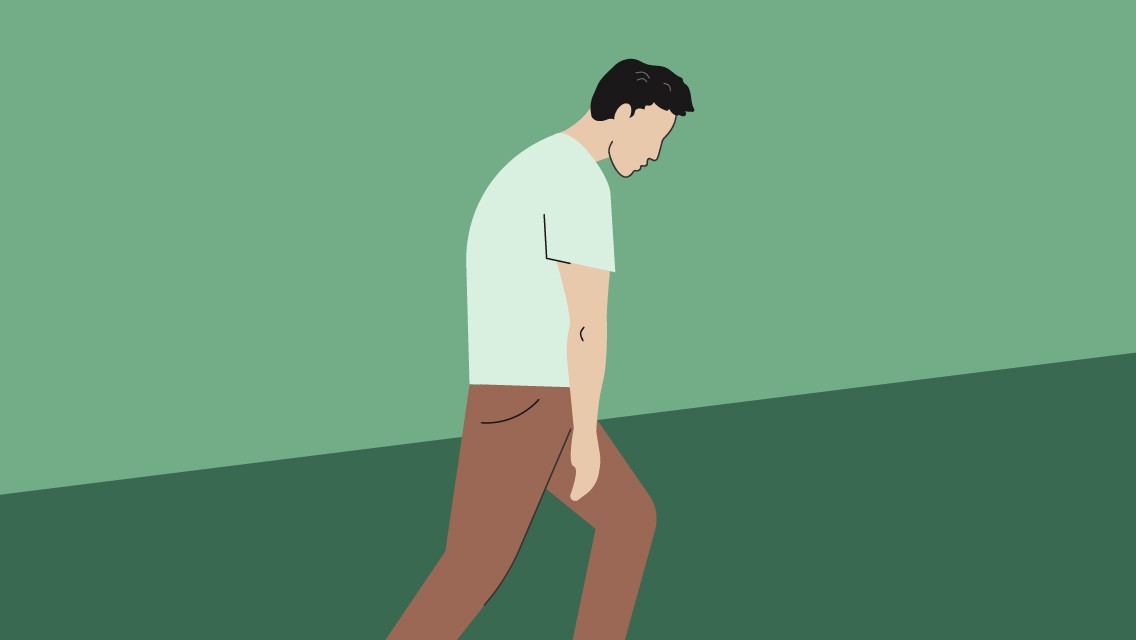If you’ve ever struggled through adrenal fatigue, you’ll never forget how difficult it was to navigate.
Even being a dietitian and trainer — and having the knowledge to optimize adrenal health — I have firsthand understanding of the challenge.
I was in my mid-20s, and I had just transitioned from working a demanding schedule in a Life Time club as a trainer and coach to a role in the corporate office. I was struggling with disrupted sleep, low energy, and intense sugar cravings. For the first time in my life, I had gained weight in my midsection.
During this same time period, Life Time was launching a menu of comprehensive lab testing assessments for members to better understand their metabolism and shape their plan. As part of my role at the time, I would be doing lab reviews with participants to help personalize their programs. To better prepare for this task, I was able to go through the entire experience myself.
It couldn’t have come at a better time.
Personalized Testing
One of the tests I completed was a saliva cortisol test to monitor my daily pattern of the stress hormone. Cortisol is made by the adrenal glands and, when out of balance, can negatively impact metabolism.
I had a functional-medicine doctor review my results, and his response was eye-opening: “What’s going on with you? You’re 24 years old. You’re too young to have such disrupted cortisol levels.”
Generally, cortisol rises and falls with the sun, with levels highest in the morning and gradually decreasing throughout the day. Instead, my pattern at the time revealed low, flat-lined cortisol all day long. In other words, I was struggling with adrenal fatigue. (Read more about adrenal fatigue here: “Adrenal Fatigue: Causes, Symptoms, and Solutions.”)
Below-optimal cortisol can lead to decreased energy, dizziness, low blood sugar, and all-day cravings. Conversely, higher-than-optimal cortisol can cause on-edge feelings and huge energy swings up and down.
Signs of Adrenal Dysfunction
In my work with clients, I’ve seen these common symptoms pop up often in those struggling to optimize their cortisol levels:
- Fatigue
- Difficulty waking in the morning
- Sugar cravings
- Salt cravings
- Weight gain (especially in midsection)
- Disrupted sleep
- Brain fog
- Lowered immunity
- Depression and anxiety
Although the symptoms above are common, they’re certainly not normal.
My Root Cause
In my experience doing lab reviews as part of the coaching team here at Life Time, I’ve seen a huge variety of root causes of adrenal imbalance. Most often, it comes down to unmanaged stress, chronic inflammation, and inadequate rest and recovery.
In my case, I learned that my life transition (a move, a change in job roles, and a shift in my schedule) was what pushed my metabolism over the edge after years of both working full time and going to school. I thought I had gotten used to thriving off long days with little sleep, but it turns out that the high demand I was placing on my body simply had a timeline before crashing.
Once I crossed the point of asking too much of my metabolism, it waved some major red flags, including the frustrating symptoms of extreme fatigue, cravings, and fat gain. Despite dialing in my nutrition and training approaches, these all persisted until I implemented a customized protocol after getting my labs done.
It took a lot of dedication, time, and patience to restore my adrenal function. Navigating adrenal fatigue was a huge challenge, but in retrospect, I am grateful to have had the opportunity to have my eyes opened to this type of metabolic disruptor. It helped develop and shape me into a better dietitian that could relate to my clients on a more personal level.
Learning From My Experience
Once I committed to my personalized protocol, I started to feel like myself again. After several months of consistency, I began sleeping well, feeling great, and losing fat. To this day, I’m enjoying great energy levels and vitality, and I am able to maintain the leaner body composition where I feel my best.
Here are my top tips if you’re struggling like I was:
7 Steps to Improve Adrenal Function
1. Get lab work done.
Adrenal function can vary from person to person, and although my cortisol was low throughout the day, other individuals may have high levels or peaks at certain points in the day. Looking into more comprehensive blood and saliva chemistry along with it is even better so you can get the clearest picture.
Note: I’ve now completed over 2,000 lab reviews for our members, and I’ve learned that the turning point in their journey is usually when they finally get reassurance through lab data that something was off and that the challenges they were experiencing have a cause.
2. Make sleep a priority.
I was lucky enough to have a boss who helped to change my schedule so it was more conducive for sleep, and for a while I prioritized 10 hours of sleep a night. In my case, it was non-negotiable for recovering my adrenals. I also took supportive supplements, such as melatonin and blends of 5-HTP and GABA, to help with sleep.
3. Focus on low-intensity and restorative exercise.
Prior to learning about my low cortisol, I was doing high-intensity boot-camp classes most days a week. I learned that with my specific adrenal cortisol pattern at the time, that type of training was actually increasing my sugar cravings. Instead, I focused on light cardio on a stationary bike at the club, and I did a lot more gentle yoga, such as ROOT Fundamentals. I also slowed down my strength training so it was fewer repetitions with longer rest periods between sets.
Had I not shifted my intensity down, I would have further exacerbated the stress on my adrenals.
4. Increase your protein and fat intake.
I shifted to a nutrition plan that was 40 percent protein, 40 percent fat, and 20 percent carbohydrate to help better stabilize my blood sugars, which were hard to regulate with a flatline cortisol pattern. My focus wasn’t on losing weight at the time; it was on feeling better. As the nutrition plan shaped my metabolism, I felt my energy levels slowly coming back. Additionally, my body also started letting go of the extra fat it had been holding onto so stubbornly.
Remember, however: everyone has a unique metabolism. What worked for me then was based off my lab data. I suggest talking to a dietitian about what intake of macronutrients is best for your individual needs.
5. Supplement strategically.
Most people need to start with a focus on omega-3 fatty acids from top-quality fish oil and regular intake of wild-caught fatty fish plus adequate protein. When schedules are demanding, it’s hard to get in enough protein with food alone, so it’s helpful to use a high-quality protein powder regularly. Plus, imbalanced cortisol levels can break down lean muscle tissue, which even further increases the need for protein.
I used our Vegan Protein+ All in One Shake Mix on a regular basis (formerly known as FastFuel), and I continue to incorporate it to this day. It has 30 grams of protein, plus added vitamins, minerals, and a probiotic. Since its plant-based, it’s great for an individual who might have dairy sensitivities.
I also took specialized supplement extracts (called adaptogens) designed specifically to support adrenal health based on my specific lab pattern.
6. Cut out caffeine.
When your adrenal glands are challenged, it can often feel like caffeine is the only thing keeping you going. However, it will only add even more stress to your body long-term and further worsen the dysfunction. (Plus, it can negatively impact sleep, which is critical for healing.)
Aim first to get well hydrated by targeting half of your body weight in ounces of water each day. It can be helpful to add in some extra electrolytes too, since excess stress can cause electrolyte losses.
7. Purposefully manage your stress levels.
Stress management is a non-negotiable for optimal health. If you haven’t incorporated targeted techniques yet, I’d suggest aiming to start a practice of regular meditation and yoga. It can be beneficial to begin getting acupuncture from a trained practitioner as well. Whatever you choose, find a stress-management strategy that works for you.
Even if you don’t feel stressed, your metabolism may be. Remember: for a while, I too thought I was doing well on a fast-paced schedule and little sleep. (Read more: “5 Signs You’re More Stressed Than You Think.”)
If you can relate to my experience or are struggling with any of the symptoms I’ve outlined above, know that there’s a personalized path to wellness. It starts with objective testing and takes commitment over time, but you’re not alone and do deserve to feel like yourself once again.





